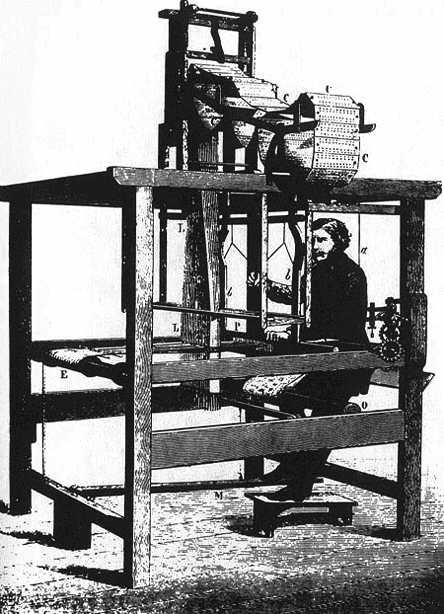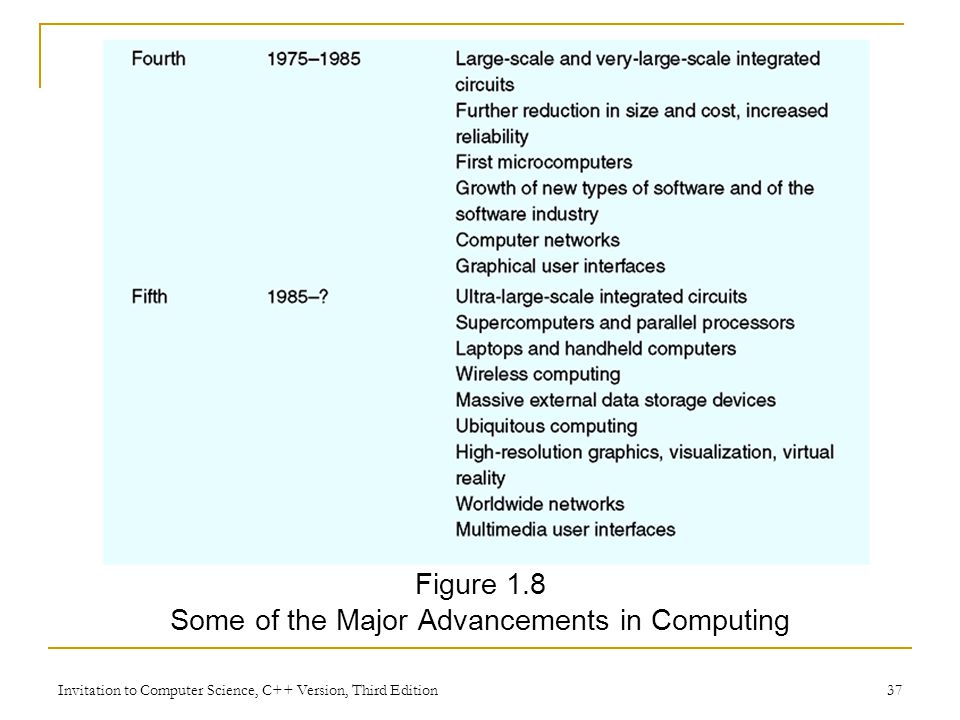History of Computing
Whether you're interested in the principle of history or you had a sudden will to read this post, WELCOME!
In the near future, I'll have an exam about the history of computing. Therefore, I thought of putting what I studied on paper will make it easy to remember afterwards. So, here we are.
I'll convey the matter into three parts.
Progress started within some discussions of mathematics abd arithmetic. The contributions of
Following him, German mathematician Leibnitz constructed the calculator, Leibnitz's Wheel, that could do four operations, in 1674.

In 1823, Charles Babbage's Difference Engine came after that. Although it could do addition, subtraction, multiplication, divison to 6 significant digits, also solve polynomial equations and other complex problems as well, Babbage did not stop his investigations with it. In 1830s, he designed a general-purpose computational machine that had four components:
In the near future, I'll have an exam about the history of computing. Therefore, I thought of putting what I studied on paper will make it easy to remember afterwards. So, here we are.
I'll convey the matter into three parts.
1-The Early Period: Up to 1940
As you know ordinary invention stories from the light bulb, the telephone or the first heavier-than-air flight, may expect computer to be invented in the past within a huge individual effort of a genius or general scientific steps. However, computers don't have exact time of invention and they did not appear in a specific room. Let's begin with the subdisciplines that played role in the process of invention of computers.Progress started within some discussions of mathematics abd arithmetic. The contributions of
Greeks: development of geometry and logic
Babylonians & Egyptians: numerical methods for generating square roots, multiplication tables, and trigonometric tables used by early sailors
Indians: base-10 decimal numbering system and the concept of zero
Persians: algorithmic problem solving
In the first half of the 17th century, scientific research in the areas of astronomy, chemistry and medicine required solution to complex mathematical problems. This led Scotsman John Napier to invent logarithms in 1614. The early 17th also witnessed a bunch of mechanical devices for that purpose. The first slide rule appeared around 1622.
In 1672, Blaise Pascal built a mechanical calculator called Pascaline, which could do addition and subtraction.
:max_bytes(150000):strip_icc()/Pascaline-56a530c85f9b58b7d0db6635.jpg)
:max_bytes(150000):strip_icc()/Pascaline-56a530c85f9b58b7d0db6635.jpg)
Following him, German mathematician Leibnitz constructed the calculator, Leibnitz's Wheel, that could do four operations, in 1674.
These developments were milestones of the computational progress because they proved how mechanization can simplify and speed it up. Nonetheless, they lacked two main characteristics of computers:
- no memory, where information can be stored in machine-readable form.
- not programmable, a person could not provide in advance a sequence of instructions that can be executed by the device without manual intervention.

In 1823, Charles Babbage's Difference Engine came after that. Although it could do addition, subtraction, multiplication, divison to 6 significant digits, also solve polynomial equations and other complex problems as well, Babbage did not stop his investigations with it. In 1830s, he designed a general-purpose computational machine that had four components:
- a mill to perform the arithmetic manipulation of data (arithmetic/logic unit)
- a store to hold the data (memory)
- an operator to process the instructions contained on punched cards (processor)
- an output unit to display the results onto punched cards (input/output)
In 1890, Herman Hollerith built programmable card-processing machines that could automatically read, tally and sort data entered with a keypunch on the punched cards. The card were taken either to a tabulator for counting and tallying or to a sorter for ordering alphabetically or numerically. Both of these machines were programmable. In addition, they had memory like that of Babbage's Analytic Engine. Thus, they had all four components of Analytic Engine. The remarkable difference was that Hollerith's machines were one of the examples of the use of automated information processing used for solving a real-word problem, 1890 census with massive data.
2-The Birth of Computers: 1940-1950
World War II created quite different problems and research projects became funded by military. Beginning in 1931, a computing device called MarkI was built, which was an electromechanical programmable computer used a mix of relays, magnets and gears to process and store data. The MarkI was the first device to use the base-2 binary numbering system. It also used vacuum tubes and electric current to represent the two binary values, off for 0 and on for 1. It had a memory capacity of 72 numbers and could be programmed to perform 23-digit multiplication in 4 seconds. In order for US army to solve this speed problem, ENIAC (Electronic Numerical Integrator and Calculator) was completed in 1946 and the first fully electronic general-purpose programmable computer.

Since it was fully electronic, it did not contain any of the slow mechanical components found in MarkI, but was thousand times faster than it.
These two are very well-known examples of early computers, yet they are of course not the only ones of that era. For instance, the ABC system (Atanasoff-Berry Computer), built in 1939-1942, was actually the first electronic computer. It never recieved equal recognition because it was only useful for one task, solving systems of simultaneous linear equations. By the way, a computer called Colossus in England was constructed in 1943 under the direction of Alan Turing. Also that one was not widely known because it was used to crack the German Enigma code that the Nazis believed to be unbreakable, so kept its secrecy. At the same time, German engineer called Konrad Zuse was also working on a computer called Z1 for the German army.
Since it was fully electronic, it did not contain any of the slow mechanical components found in MarkI, but was thousand times faster than it.
These two are very well-known examples of early computers, yet they are of course not the only ones of that era. For instance, the ABC system (Atanasoff-Berry Computer), built in 1939-1942, was actually the first electronic computer. It never recieved equal recognition because it was only useful for one task, solving systems of simultaneous linear equations. By the way, a computer called Colossus in England was constructed in 1943 under the direction of Alan Turing. Also that one was not widely known because it was used to crack the German Enigma code that the Nazis believed to be unbreakable, so kept its secrecy. At the same time, German engineer called Konrad Zuse was also working on a computer called Z1 for the German army.
After all this inventions, one more step was necessary and it was taken by John Von Neumann. Even though ENIAC project was succesful, he detected a few fundamental shortcomings in it. Then, he proposed a radically different computer design based on a model called stored program computer. Until then, all computers were programmed externally by using wires, connectors and plugboards. Moreover, the memory unit stored solely data, not instructions. To solve a problem , instead of rewiring the machine, you would rewrite the instructions, which means creating a new program. Hence, Von Neumann invented programming as it known today. After that, his research group implemented his ideas, and they built one of the first stored program computers called EDVAC, in 1951. At the same time, a stored program computer called EDSAC was built in England too. A commercial model of the EDVAC, called UNIVAC-I , the first computer actually sold, was built by Eckert and Mauchly and delivered to the US Bureau of the Census on March31, 1951. This date marks the true beginning of the computer age.
💥There's an old saying in computer science that "There's nothing new since Von Neumann!". Of course this is not certainly true, but it does demonstrate the importance and staying power of his original design.

In the beginning of my text, I told you that the invention of computers does not indicate a single scientist, but John Atanasoff was declared as the really inventor of the first computer through a verdict.



Thanks for reading... 🌸🌺
💥There's an old saying in computer science that "There's nothing new since Von Neumann!". Of course this is not certainly true, but it does demonstrate the importance and staying power of his original design.

In the beginning of my text, I told you that the invention of computers does not indicate a single scientist, but John Atanasoff was declared as the really inventor of the first computer through a verdict.
3-The Modern Era: 1950 to the Present
The last 60 or so years of computer development have involved taking the Von Neumann architecture and improving it in terms of hardware and software.
The period of 1950-1957 is called the first generation of computing. This era saw the UNIVAC-I and the IBM701, the first computer built by a company. They were expensive, slow, bulky and unreliable. For this unconvenient reasons, first-generation machines were used only by trained personeel and in specialized locations.
The second generation of computing, 1957-1965, announced good news about the change in size and complexity of computers. The bulky tube was replaced by a single transistor and memory was constructed using tiny magnetic cores. So, these technologies reduced the size and cost, inversely increased their reliability. Suddenly, buying a computer became a real possibility for small or medium-sized businesses, colleges and government agencies. At this time, also FORTRAN and COBOL appeared. This led to the birth of an occupation called programmer.
1965-1975 was the third generation of computing. This was the era of the integrated circuit. Rather than using discrete electronic components, integrated circuits were etched onto (cut or carve -a text or design- on a surface) silicon, which further reduced the size and cost of computers. They became desk-sized. This period saw the first minicomputer, the PDP-I and also the birth of the software industry. By the mid-1970s, computers were no longer a rarity.
The fourth generation, 1975-1985, saw the appearance of the first microcomputer (the first one is Altair 8800). The desk-sized machine of the early 1970s now became a desktop machine, shrinking to the size of a typewriter.

It soon became unusual not to see a computer on somebody else's desk. This era saw the appearance of computer networks, as users realized that much of power of computers lies in their facilitation of communication with other users. Electronic mail also became an important application. User-friendly systems and graphical user interfaces emerged. Embedded systems first appeared during this term. Computers became small enough to be placed inside cars, thermostats, microwave ovens and wristwatches.
The fifth generation, 1985- ?, is where we are today. These are some developments in computer systems:
- Massively parallel processors capable of quadrillilons of computations per second.
- Handheld digital devices and other personal digital assistants
- High-resolution graphics for imaging, virtual reality, movie making and animation
- Powerful multimedia user interfaces
- Integrated digital communication devices incorporating data, TVs and theWorld Wide Web
- Wireless data communications
- Massive storage devicesf
- Ubiquitous (present, appearing, or found everywhere) computing, in which miniature computers are embedded into our cars, home heating systems, kitchen appliances, even our clothing
⭐Changes of this magnitude have never occured so quickly in any other technology.
SUMMARY:


Thanks for reading... 🌸🌺
Comments
Post a Comment